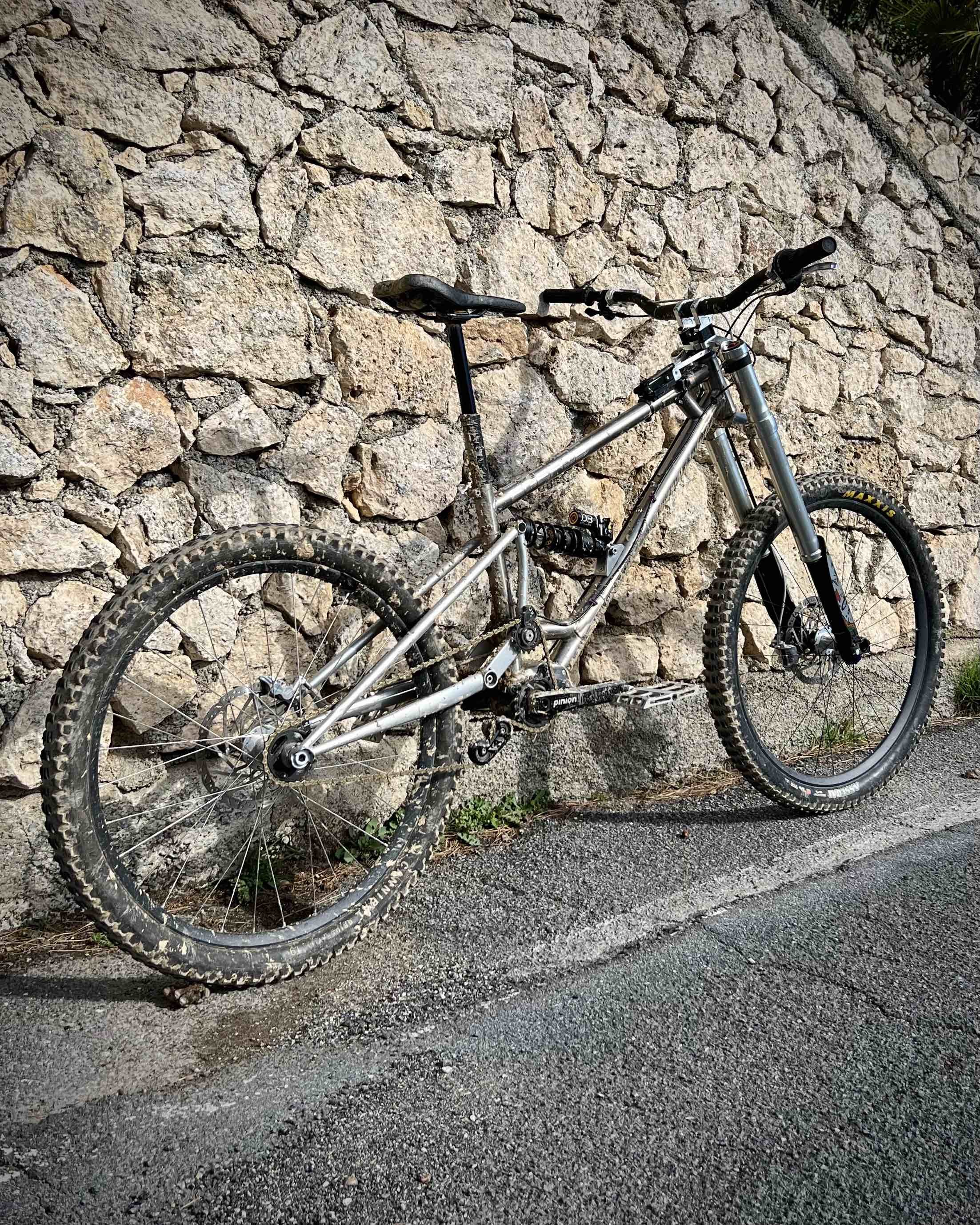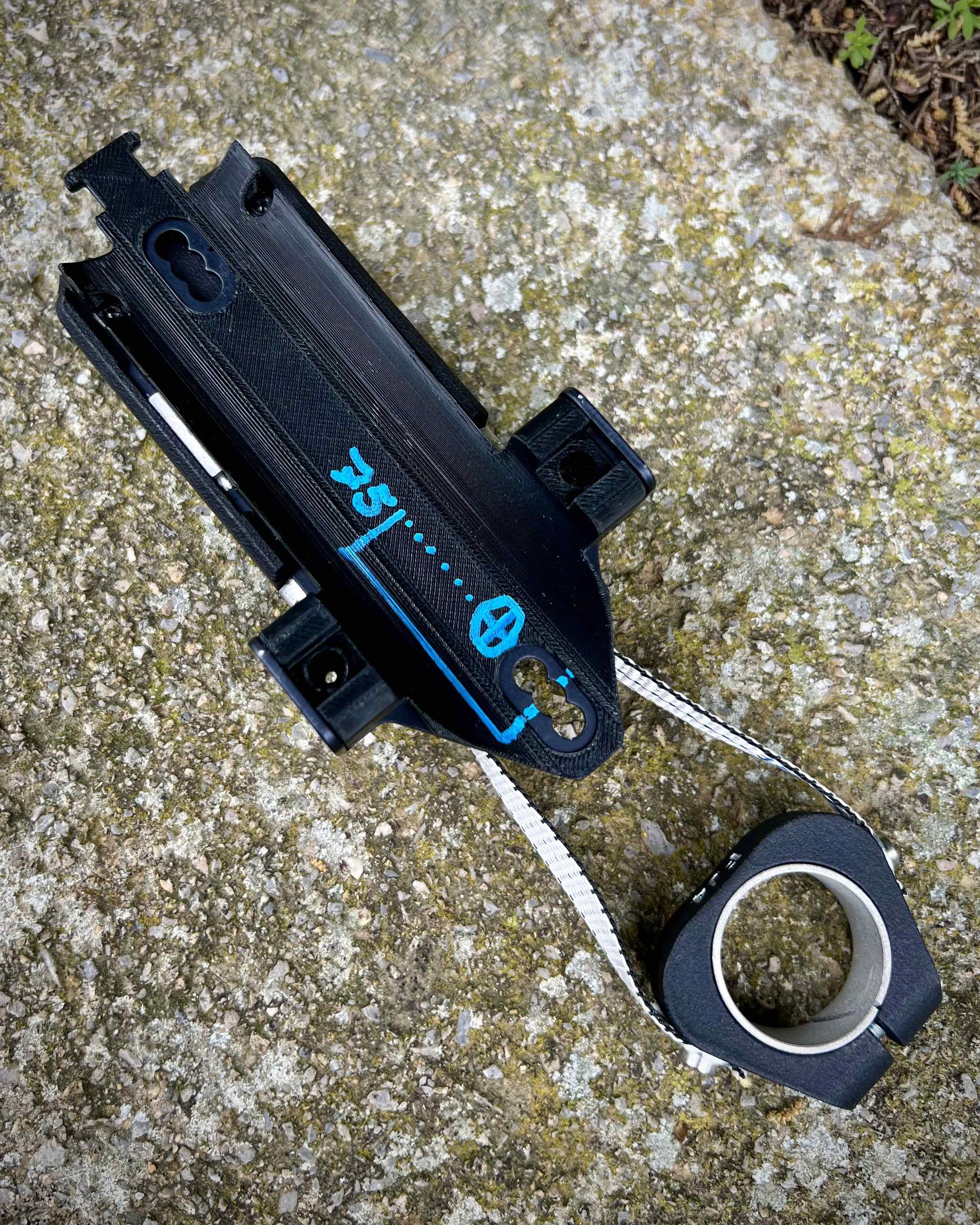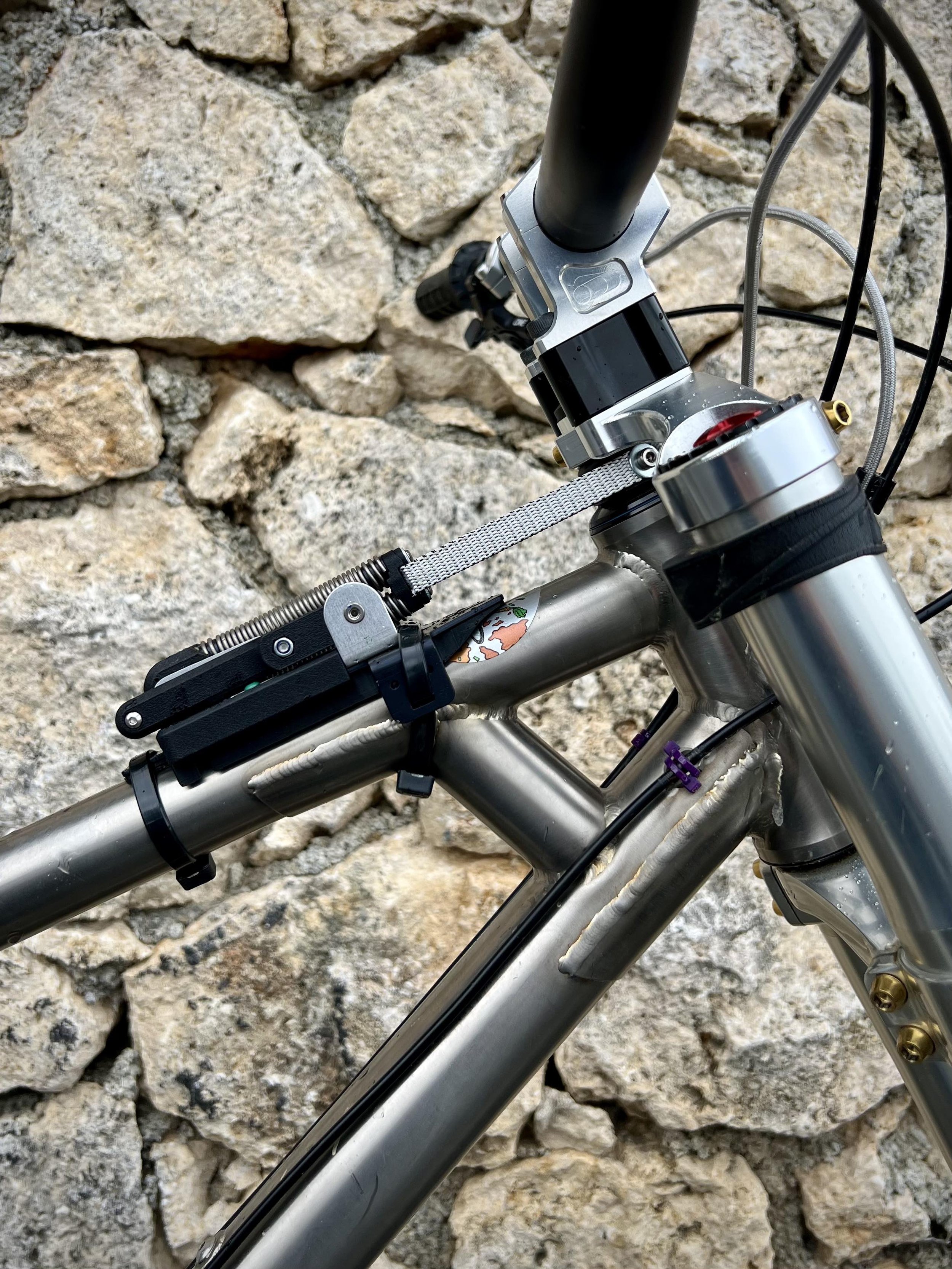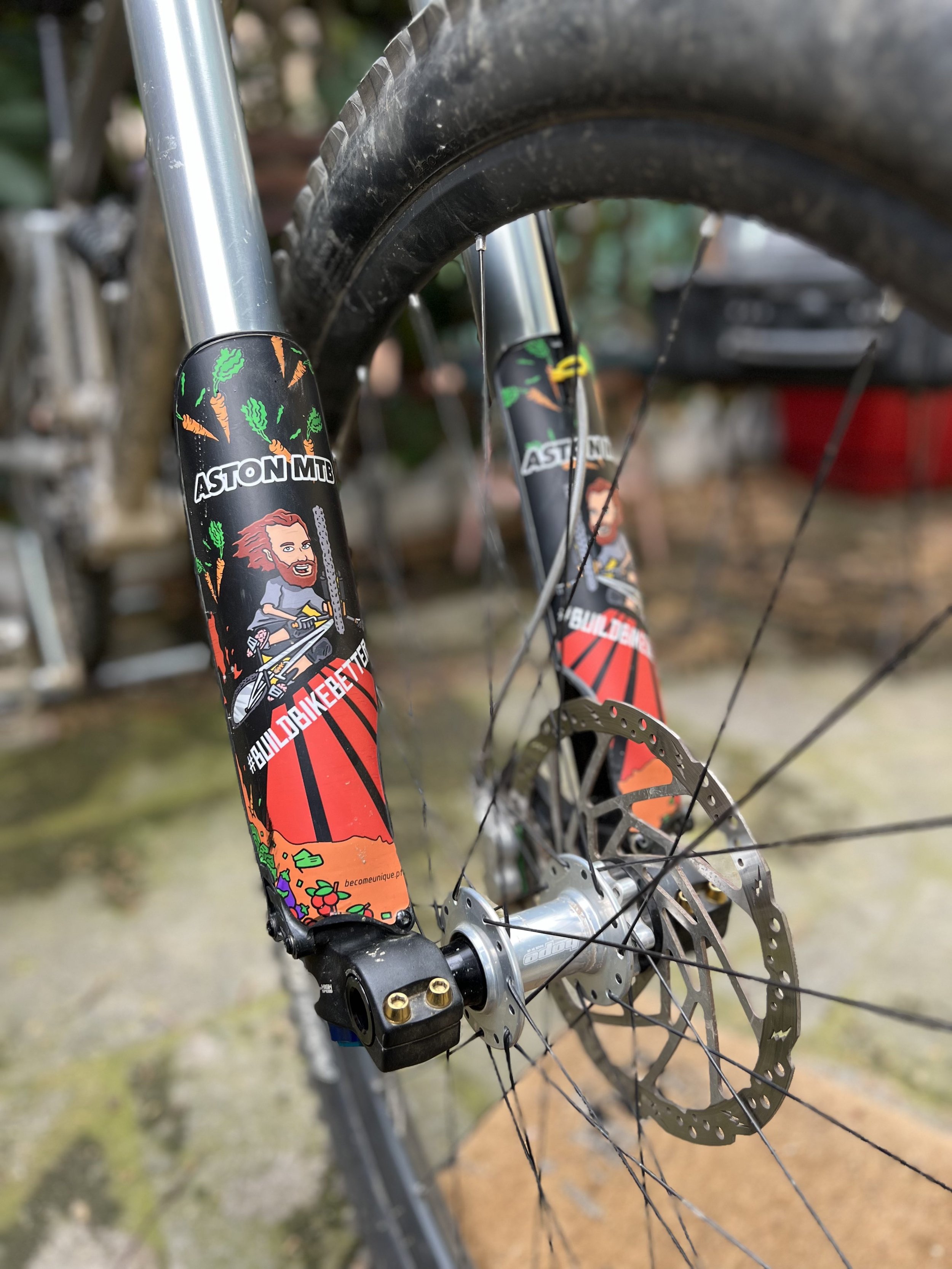KIS - Keep It Stable - First Impression
KIS - this is a Keep It Stable Prototype from and unknown source.
I fitted it to my custom Egerie - continuing to test my futuristic vision of an enduro/DH mtb.
Intro
The KIS system was developed by Jo Klieber, the mad scientist behind Syntace and Liteville Bikes. The only places these are available at the moment are on Canyon-licensed bikes and Liteville bikes. However, the plan is to expand system availability to other brands that would like to feature it on their bikes.
I got hold of a prototype KIS system from a guy I know with a dog who plays with another dog at the dog park who found it somewhere in a bush. This prototype can be fitted to most bikes and doesn't need to be integrated into the frame - which obviously would be better inside in terms of visual and maintenance benefits.
Is it a steering damper? No, it doesn’t dampen any steering forces by creating friction in a hydraulic system like units found on motorcycles and the old Hopey Steering damper.
Its pretty sinple really: 3D printed carrier, a couple of springs and kevlar bands.
PatentedAF bro.
What is it then? It’s a self-centering system which through steel springs and Kevlar bands helps to re-centre the handlebars so you are going in a straight line more of the time. Mountain bike steering is completely free to rotate with essentially zero friction in the headset so the gyroscopic forces of the wheels and the riders' balance and hand inputs do the job of keeping you riding in a straight line. Many other vehicles like cars, boats, and aeroplanes have self-centering systems: just think when driving a car and you let go of the steering wheel it will straighten out on its own accord.
The KIS system connects to the steerer tube with a specifically shaped cam.
Ideally the system would be fitted inside the frame to keep it clean.
Ride Impressions
As I said earlier, I got this prototype version and strapped it onto my Tit-Ron-A-tron. This unit can easily be flipped up to disengage it and then folded down to engage the system meaning it’s easy on the trail to switch between modes without even stopping rolling. I only used in in the centre position, but it can be adjusted further back or forwards to increase or decrease the tension. Here are my first impressions:
Pedalling up the hill, I never realized how much my bars were turning while going in a straight line until I engaged the KIS and the steering became less sensitive and slightly easier to keep straight; it requires more input to turn as you push against the spring resistance but this is very intuitive and after a few seconds and minutes I no longer noticed. Disengage the KIS and it’s noticeable how much the bar wiggles side to side even though you feel like you’re going perfectly straight - it’s much easier to see with this system bolted to the top tube as you can see the springs stretching and moving.
Heading downhill, I’m already riding probably the most stable MTB ever created with a 62º head angle, 500mm reach, and 490mm chainstays, so stability isn’t a concern. But, the KIS instantly shows a noticeable benefit making the bike calmer everywhere - especially at higher speeds in small and greasy, angled and rough rocks and roots.
It also makes the bike more stable when leant over in a turn and striking small angled obstacles that might deflect the front wheel and destabilize you from a balanced riding posture. I imagine this would also work nicely in ruts. It also possibly reduced understeer on some flat and wet/muddy corners, either pulling the wheel straight or transferring some force into the rear wheel (essentially creating a connection between both wheels) but this requires more testing.
The main benefit I found is that you can simply grip the handlebar less and your brain and body need to think less about steering and counter-steering to keep on the right line. Less for your brain to compute means more focus on the trail and how you want to ride instead of battling the bike.
My favourite benefit was that it gave me a little more confidence when placing the front wheel into turns with rough entrances - weighting the front wheel and initiating the turn seemed a little easier and I had more confidence in the front.
Trying to ride no-handed, was, well, more difficult, and there were a couple of times I felt like I was starting to lean in the opposite direction of the way I wanted, but these moments were minimal.
Conclusion
I put in 4000m of descent for a first shakedown of the KIS, and while I don’t think it’s a game-changer, I definitely wouldn’t take it off my bike yet. Most of the points above sound like great benefits, which they are, but it’s not a giant difference. It’s subtle and if I had to pull a figure out of the air I would say it improves steering stability somewhere from 5-15%.
I want to put some serious riding time on this over the next months to see if it further improves the bike as the brain learns to use it to its full potential. I’d like to try and get it mounted to an e-bike as some other testers I’ve spoken to say it’s a great advantage when climbing tech.
Thanks for reading this independent review:
My AstonMTB Mission is to give the most independent bike reviews online. Starting with stock equipment then trying to get the absolute best performance out of it.
All products are bought by me at full price and funded through competition ticket sales for THE BEST MTB kit on my astonmtb.com website. If you liked it, please buy some tickets to support and you never know, you might win a damn good prize!
Crowdfunded by you guys so you get the truth before you spend your hard-earned £££. No paid-for reviews, no back-handers, no sponsored posts.











